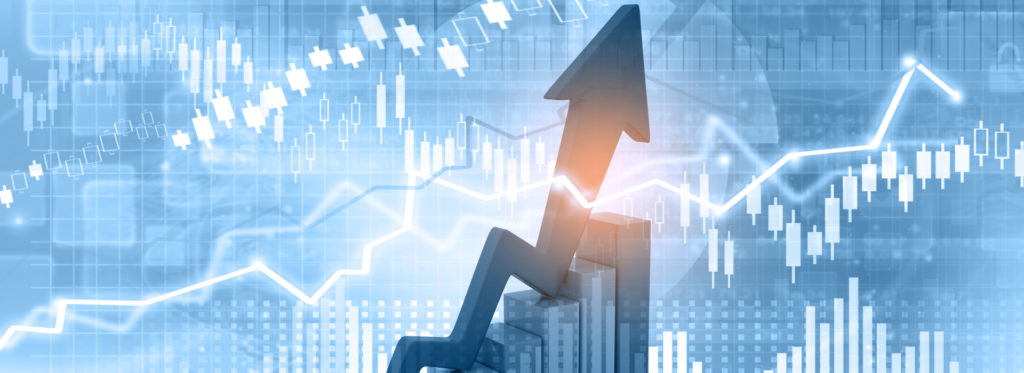
Can PR professionals use data to drive results and make more informed decisions? Matter PR takes a quick look at some of the most important ways data can help us spot trends, improve our performance, and truly understand our audiences.

A world of spreadsheets and analytics has enabled data to become a lifeblood of our existence – from personal data across social media platforms to numbers that give us insights into finances. For many people, pages of numbers might seem intimidating or dull. But data is a valuable commodity that helps us understand things and allows us to make more informed decisions. Data can help us gain insight, improve our strategies, and in extreme cases, change our behaviours for the better. But, how does it help PR professionals? Here we take a quick look at some of the most important ways data can drive results, improve our performances, and truly understand our audiences.
At Matter PR, data is an enormous help to all areas of communications and public relations and often assists us with the day-to-day running of our work. Derived from the Latin ‘datum’ meaning ‘a given’ or ‘gift’, we see data as a present that allows us to measure success, spot trends, and gain a deeper understanding of our audiences. We make more informed decisions by delving deep into the numbers. PR professionals and agencies that use data are much better positioned to offer clients a competitive advantage by providing insights and strategies with more substance. Perceptions rooted in data can help clients differentiate themselves from their competitors and achieve their business objectives more effectively.
Understanding Audiences
Data can help us better understand who our audiences are, what they care about, where they spend their time, and what kind of messaging will resonate with them. We can create more targeted and effective campaigns that drive results by using data to build detailed audience profiles. Exactly what these ‘right’ types of data depend on the specific goals and needs of the campaign. We can comprehensively understand our audiences and create effective communication strategies that drive results by combining different data types.
Market Research Data – Market research data includes information about trends and consumer behaviour in a particular industry. This data can help us understand the broader market landscape and identify opportunities for our clients. Market research can use many methods, such as surveys, focus groups, interviews, or online analytics, to suit goals and target audiences. After collecting and analysing the data, patterns and insights can be developed to help us build audience profiles with demographic information, interests, and behaviours. Using these insights gained from the research, we can develop messaging and content that resonates with our audiences, equipping us to target different audience segments based on their preferences.
Behavioural Data – Behavioural data includes information about how an audience interacts with a brand and can include purchase history, online activities such as website visits, clicks, and purchases, as well as offline behaviours such as in-store purchases and event attendance. For PR professionals, behavioural data is excellent for monitoring website activity, email response rates, and other types of digital interactions, such as social media engagement. This can help us understand which types of content and channels are most effective in reaching their audience.

By analysing this data, we can identify patterns and trends in behaviour, understand the effectiveness of our marketing and communication efforts, and make data-driven decisions to improve our strategies. We might use behavioural data to track how many people engaged with a social media post about a particular topic, how long they spent reading a blog post or watching a video, or how many people clicked on a link to learn more about a product or service. This information can be used to create more targeted and effective communication strategies tailored to our audience’s specific interests and behaviours. For example, LinkedIn posts are always more engaging and effective with professionals on a Tuesday, Wednesday or Thursday – so we hardly ever post this type of content at the start or end of a week.
Demographic Data – Demographic data or statistical data about a particular population or group usually includes characteristics such as age, gender, race, ethnicity, education level, occupation, income, and location. Demographics can help us understand who our audiences are and tailor our messaging accordingly. For example, a business might use demographic data to understand its customers’ age and income levels and tailor its products and services to meet their needs. It is a powerful way of understanding and segmenting audiences for marketing, communication, and public relations purposes.
Media Consumption Data – Media consumption data can help us understand how people consume different media types, such as television, radio, print, and digital media. It includes information about the media habits of an audience, such as which social media platforms they use, which publications they read, which TV shows they watch and the devices they use to access media. By analysing media consumption data, businesses, marketers, and PR professionals gain insights into the behaviour and preferences of their target audience.
We might use media consumption data to identify the publications, podcasts, or social media platforms our target audience is most likely to consume or the times of day when they are most likely to be online. This information is very useful because it enables us to identify the most effective channels and platforms for reaching their target audience, understand which types of content are most engaging to their audience, and create more effective media strategies tailored to the specific media consumption habits of their audience.
Measuring Success
Data helps us PR professionals and agencies measure the success of our campaigns and strategies. It can give us the right tools to measure and evaluate their impact on our clients’ objectives. We can measure success using data by tracking key performance indicators (KPIs) and analysing the data to determine the effectiveness of our campaigns. You might feel a media campaign performed quite well, but is this vague belief good enough? How do you measure something like the success of a campaign or messaging? We need contextualised information to give our clients a complete picture of the success of a media campaign. It is essential to know all manner of data points when helping them understand whether key messages are resonating with their audiences or are getting through to the right group of people. Knowing the numbers is essential.
By setting measurable goals and tracking key performance indicators, data can show clients the value of your work and help you make adjustments to improve results. For example, data can measure engagement, reach, and conversion rates to see how well a social media campaign has performed. Once a campaign is complete, data can help us report the results to stakeholders. Simply saying your media campaign had three hundred pieces of coverage isn’t good enough. Instead, clients would better understand the campaign by looking at the geographical regions of the world this campaign reached. What was the total unique monthly readership of the campaign? How many people actually read those articles? How many mentions did your news story get on social media? Going further, delving deeper and adding colour really helps clients get to grips with understanding.

Spotting Trends
Data can help us stay on top of industry trends and identify emerging issues. By monitoring news and social media channels, we can understand which topics resonate with our target audiences and how our clients’ competitors respond to these trends. This information can inform communication strategies and keep clients ahead of the curve.
News Trends – PR professionals can spot emerging trends and conversations by monitoring news and social media channels. This can help them identify opportunities for clients to participate in relevant conversations or take advantage of emerging trends. Technological changes, the availability of new media platforms, and shifts in consumer behaviour and preferences shape these trends. For example, with the widespread availability of smartphones, laptops, and other digital devices, digital media consumption has increased dramatically in recent years. More people are consuming media on mobile devices rather than desktop or laptop computers. This has led to the growth of social media platforms, online video streaming services, and other digital media channels. With the rise of streaming services such as Netflix and Hulu, more people are consuming media on demand rather than traditional broadcast channels. Traditional media channels such as television, radio, and print media have seen declines in engagement as more people have flocked to digital media channels.
Media Consumption Trends – Media consumption trends, or the patterns and shifts in how people consume different types of media over time, are incredibly important to us. By keeping track of media consumption data, we can identify trends in how our target audiences consume media. PR professionals need to stay current with media consumption trends to create effective communication strategies that resonate with our target audiences. By understanding how audiences consume media, we can develop more targeted and effective strategies that reach our audience where they are most likely to engage with media content. For example, suppose data shows a particular social media platform is gaining popularity among a specific demographic; we can adjust our communication strategies to reach that platform’s audience better.
Sentiment Trends – Sentiment trends are the patterns and shifts in the attitudes and emotions expressed by people towards a topic, brand, or event. By tracking sentiment data, we can identify shifts in public opinion towards our clients or their competitors. In analysing this data, such as social media posts, online reviews, or customer feedback, we can determine the type of sentiment and adjust our communication strategies to address negative sentiment, reflect and improve on any neutral sentiment, or capitalise on any positive sentiment. By analysing sentiment trends, we can track changes in public opinion towards a brand or product or detect emerging issues or crises before they escalate. Using data to track these trends helps us understand the emotional impact of events on our audiences and allows us to create more empathetic and effective communication strategies.
In short, it is hard to exaggerate the critical role data plays in the work of public relations and communications. While there is no guarantee that PR professionals or agencies that use data will always perform better than those that do not, data-driven insights provide excellent measurement, evaluation, and insight, allowing us more agility and adaptability. By using data to understand our target audiences better, measure success, identify trends, and manage crises, we can create more effective communication strategies that drive results for our clients.
From Public Outreach to Stakeholder Engagement, Matter PR specialises in helping organisations translate complex scientific projects into compelling stories which help communicate the importance and potential impact of their work.
Established in 2013, Matter PR is one of the only communications agencies specialising solely in engineering, science and technology. Contact us today to see how we can help you with your communications activities.
